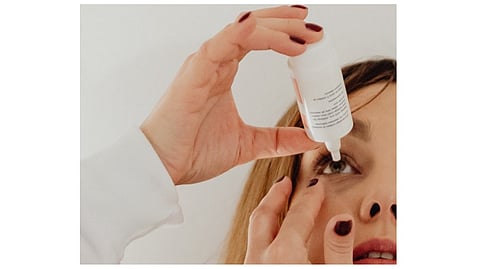Questions remain about artificial tears linked to an outbreak of Pseudomonas aeruginosa infections involving 64 people in 13 states, including 8 cases of vision loss, as well as lung and urinary tract infections, and one death. Federal agencies warned people to stop using EzriCare and Delsam Pharma artificial tears after tests of opened bottles used by those affected found a rare, extensively drug-resistant strain of P. aeruginosa. The strain had never been reported in the United States.
The Centers for Disease Control and Prevention is investigating how the virulent strain of P. aeruginosa ended up in the artificial tear bottles; it’s uncertain if contamination occurred during or after manufacturing. Testing of unopened bottles by the CDC is ongoing. And further details are sought about each case of infection.
“We are actively gathering more information about long-term patient outcomes, particularly for patients with eye infections,” said Curtis Gill, a spokesperson for the CDC.
What is clear is that eye health experts have advice for people using artificial tears, which are sold over the counter and widely used for eye irritation associated with dry eye disease, contact lens use, and refractive surgery, as well among those using other eye drops regularly, such as for glaucoma.
Need preservative free? Use single-dose vials
The recalled brands are preservative-free, a formulation that’s often recommended for people who use artificial tears more than 4 times a day.
“Formulations with preservatives reduce the risk of bacterial growth and potential infection. However, commonly added preservatives such as benzalkonium chloride, polyquaternium, or sodium chlorite themselves can be irritating to the eye, especially if used 5 or more times a day,” said Dr. Chantal Cousineau-Krieger, M.D., an ophthalmologist at the NEI.
Importantly, the recalled brands were not only preservative free, but they were sold in bottles containing multiple doses. Repeated use of an eyedrop bottle that lacks preservatives can set the stage for contamination. Should that contamination involve a pathogenic micro‐organism, that ups the risk of serious ocular infection, she said.
“People who require preservative-free artificial tears can purchase single-use, individual dose vials, which cut contamination risk significantly,” Krieger said.
It’s also worth noting that some preservative-free artificial tears involve sophisticated bottle designs aimed at preventing contamination. For example, some brands come in vials with a special tip that blocks airflow back into the bottle, which allows the drops to remain sterile for a longer period after opening.
Anyone using eyedrops of any kind should wash their hands beforehand and avoid touching the tip of the bottle to their eye and eyelids, which can increase the risk of contaminating the tip as well as the contents in the bottle.
A look at Pseudomonas aeruginosa
“While infection with the specific, highly resistant bacterial strain at the heart of the outbreak is rare, P. aeruginosa as a bacterial species is everywhere. It lives in soil, ponds and lakes, and even tap water,” said Suzanne M.J. Fleiszig, OD, Ph.D., professor of optometry and vision science at University of California, Berkeley. In studies funded by the NEI, Fleiszig uses P. aeruginosa as a model pathogenic organism to better understand the pathogenesis of bacterial eye infections.
P. aeruginosa is an opportunistic pathogen. Meaning that it tends to cause infection only when defense mechanisms are not working properly, such as when someone is immunocompromised from chemotherapy. It can also occur in conjunction with use of indwelling medical devices, which include contact lenses.
“Humans have evolved all these defenses. And under normal circumstances, we don’t get infections with opportunistic pathogens,” said Fleiszig, who also studies the eye’s defense mechanisms along with factors that enable P. aeruginosa to evade them.
P. aeruginosa needs only five essential elements to survive and grow. “I was surprised to learn that preservative-free artificial tears in multi-use bottles even existed,” Fleiszig said. Compared with a nutrient-rich lab broth, saline or even plain water provide P. aeruginosa with an environment where it tends to become even more virulent and drug-resistant because it’s adapting as a response to stress.


